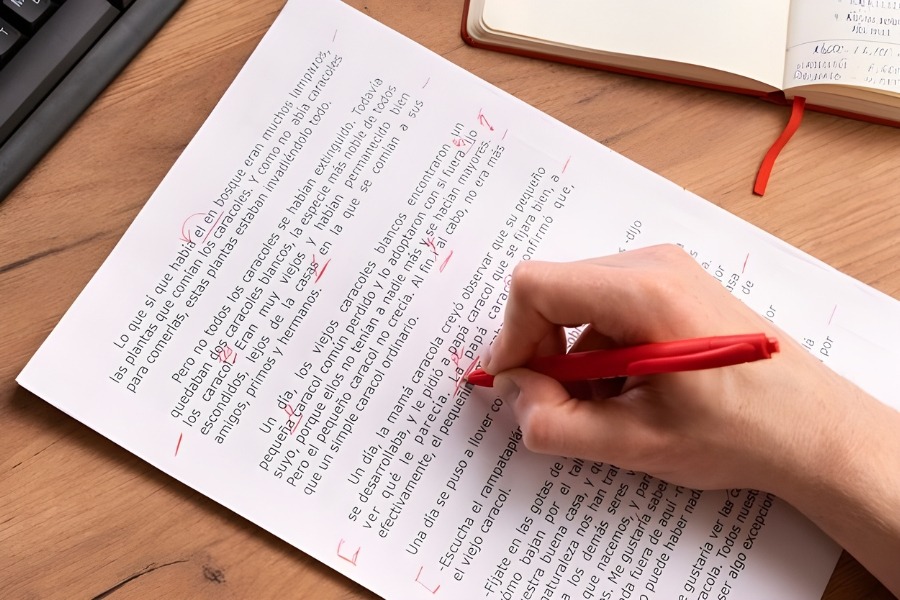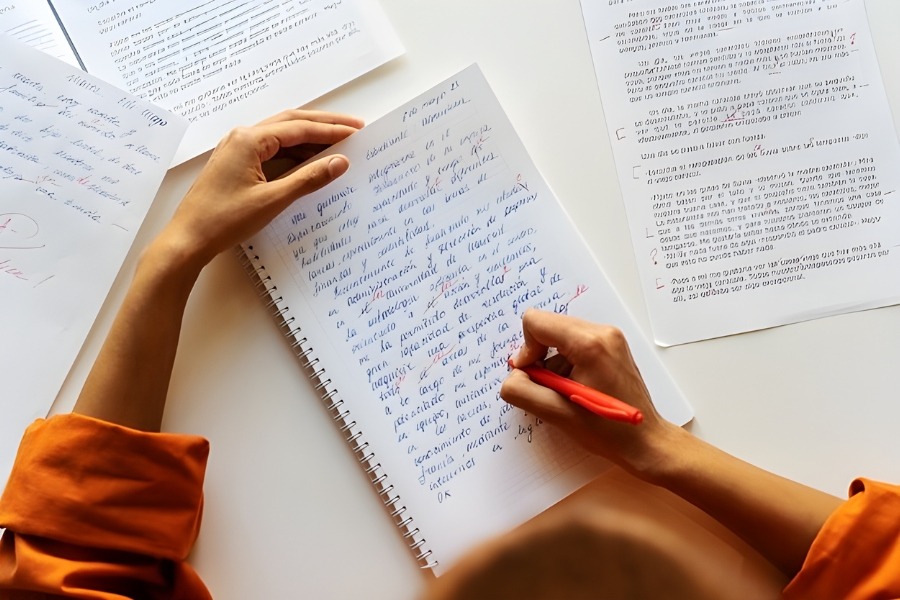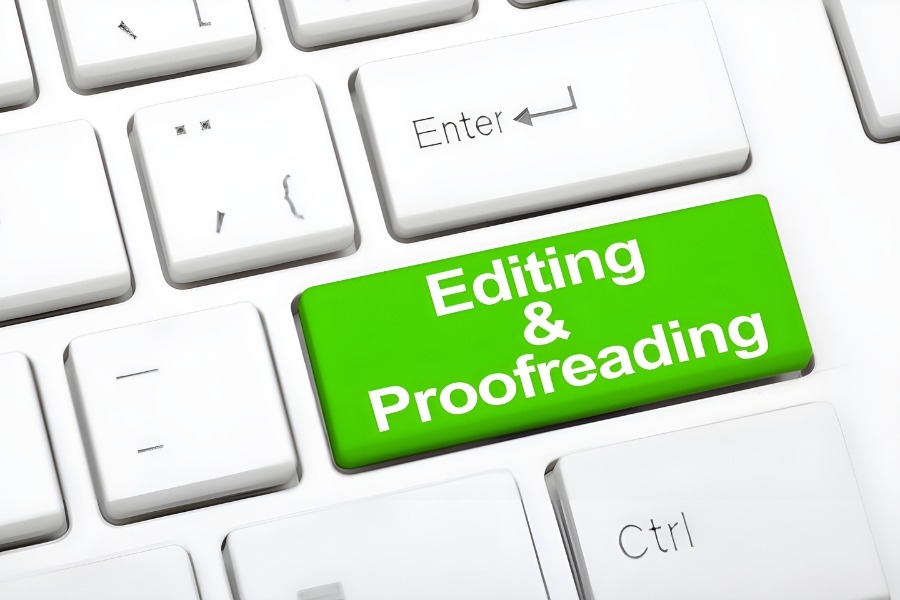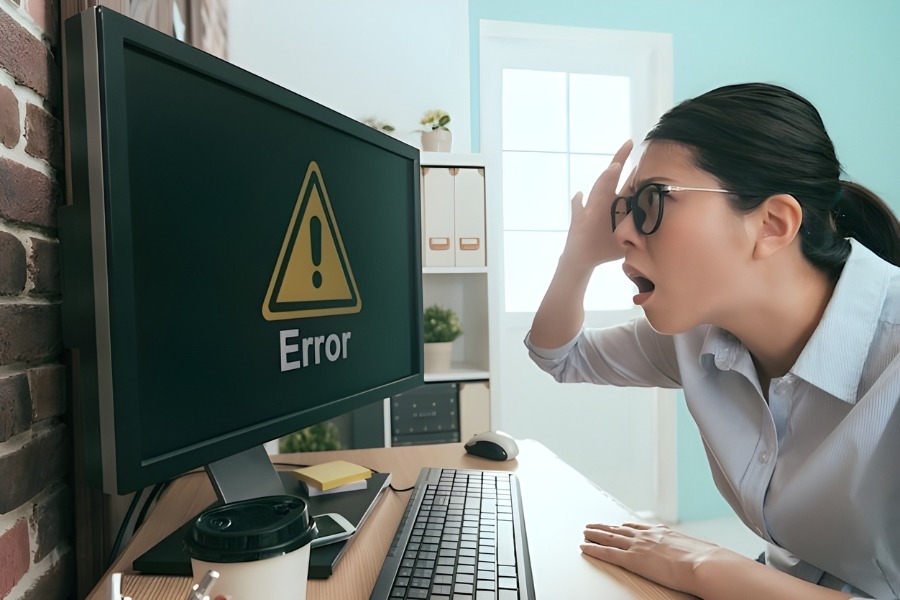Mastering Editing and Proofreading in the Writing Process: A Comprehensive Guide
Introduction

Editing and proofreading play pivotal roles in refining written content and ensuring its quality. This comprehensive guide delves into the significance of these processes within the broader writing context, emphasizing their contribution to producing polished and error-free work. By establishing the importance early on, this introduction aims to instill an understanding of the integral role that editing and proofreading play in enhancing the overall writing process.
Understanding Editing and Proofreading

Definition and Distinctions
Editing vs. Proofreading:
This section provides a clear distinction between editing and proofreading, elucidating the unique functions each process serves. While editing focuses on the broader aspects of content, structure, and flow, proofreading zooms in on the nitty-gritty details like grammar, spelling, and punctuation.
The Role of Editing
Content Enhancement:
Explore how editing goes beyond surface-level corrections, delving into the core content. Discuss how editors refine ideas, improve clarity, and ensure coherence in the narrative or argument. This section establishes editing as the foundation for a well-structured and engaging piece of writing.
The Role of Proofreading
Refinement of Language and Mechanics:
Examine the specific elements that fall under the purview of proofreading, such as grammar, spelling, and punctuation. Emphasize how proofreading fine-tunes the language and ensures correctness at a granular level. This section highlights the meticulous nature of proofreading and its role in perfecting the technical aspects of writing.
By elucidating the distinctions between editing and proofreading and emphasizing their respective roles, this guide aims to equip writers with a comprehensive understanding of how these processes contribute to the overall refinement of their work. The subsequent sections will delve into practical strategies, tips, and best practices for mastering editing and proofreading in the writing process.
Key Editing Techniques

Editing is a crucial phase in the writing process that involves refining and polishing the content to enhance its overall quality. Mastering various editing techniques is essential for producing well-crafted and effective written work. This section will delve into key editing techniques with a focus on “Editing and Proofreading in the Writing Process.”
Structural Editing
Structural editing is a fundamental process that involves addressing the organization, coherence, and logical flow of the written piece. During this phase, the editor assesses the overall structure of the content to ensure that ideas are presented in a logical sequence. This includes examining the introduction, body, and conclusion, as well as evaluating the transitions between paragraphs and sections. The goal is to create a cohesive and easily understandable narrative or argument.
Stylistic Editing
Stylistic editing aims to enhance the clarity, tone, and overall writing style of the document. Editors focus on refining the language to make it more engaging and effective. This involves eliminating unnecessary jargon, adjusting sentence structures for better readability, and ensuring that the tone aligns with the intended audience. Stylistic editing plays a crucial role in creating a polished and professional writing style.
Content Editing
Content editing focuses on ensuring that the message is conveyed effectively and cohesively. This involves evaluating the relevance and depth of the content, checking for consistency in arguments, and addressing any gaps or redundancies. Content editing goes beyond surface-level corrections and aims to strengthen the substance of the writing, making it more impactful and convincing.
Essential Proofreading Practices

Proofreading is the final step in the editing process and involves meticulous examination of the document to catch errors and ensure a flawless presentation. Effective proofreading is essential to maintain the integrity and professionalism of the written work. This section explores essential proofreading practices with a keen eye on “Editing and Proofreading in the Writing Process.”
Grammar and Syntax
Proofreading for grammar and syntax involves identifying and correcting grammatical errors and sentence structures. This includes checking for subject-verb agreement, proper verb tense usage, and sentence clarity. Correcting these elements ensures that the writing is grammatically sound and conveys the intended message accurately.
Spelling and Punctuation
Proofreading for spelling and punctuation is crucial for ensuring the document’s professionalism. This step involves checking for accurate spelling, proper punctuation usage, and consistent formatting. Addressing these details contributes to a polished and error-free final product.
Consistency Checks
Consistency checks in proofreading involve confirming uniformity in terminology, formatting, and style throughout the document. This includes checking for consistent use of abbreviations, ensuring that headings and subheadings follow a consistent format, and verifying that the writing adheres to a specified style guide. Consistency checks contribute to a cohesive and professional presentation.
Tools and Resources

Editing Tools
Maximizing the Potential of Software Solutions
Achieving optimal editing results is contingent upon employing the appropriate tools. Various software applications, such as Grammarly, ProWritingAid, and Hemingway Editor, play a pivotal role in enhancing efficiency by identifying and addressing both structural and stylistic issues. These tools offer invaluable insights, serving as catalysts for continuous improvement in writing quality.
Proofreading Tools
Precision in the Final Touch
For the meticulous refinement of your work, capitalize on proofreading tools such as SpellCheckPlus, After the Deadline, or the integrated proofreading features found in word processing software. These tools function as vigilant guardians, meticulously detecting and rectifying overlooked errors to ensure that your writing attains a state of flawlessness.
Developing Your Editing and Proofreading Process

Crafting a Methodical Routine
The foundation of effective editing and proofreading lies in establishing a systematic approach. Cultivate a routine tailored to your preferences, whether it involves reviewing your work after a brief interlude or conducting edits through multiple passes. Consistency in your approach serves as the backbone of success, enhancing efficiency and facilitating a thorough scrutiny of your written content.
Seeking Feedback
At WriteInk, we believe in the power of collaboration and continuous improvement. Embark on the editing and proofreading journey with your companions in the writing world. Reach out to peers, actively participate in writing groups, and consult mentors who can provide valuable feedback. At WriteInk, we understand that fresh perspectives can unveil blind spots, leading to substantial improvements in your writing. Our content writing agency encourages a collaborative spirit of growth, where feedback is not just a means of correction but a pathway to excellence.
Common Mistakes to Avoid

At WriteInk, we recognize that writing is an ongoing learning process, filled with valuable lessons derived from mistakes. Be proactive in identifying and rectifying common pitfalls to elevate your writing to new heights. Some of these pitfalls include overlooking typos, neglecting structural coherence, or over-relying on automated tools. At WriteInk, we emphasize the importance of awareness in recognizing these pitfalls as the initial stride toward improvement and mastery. Our content writing agency is committed to guiding you on this journey of continuous learning and refinement.
Conclusion

In the domain of writing, the Odyssey stretches beyond the final period. At WriteInk, our expertise lies in the scrupulous artistry of the editing and proofreading process, where words undergo transformative sculpting into polished masterpieces. By wholeheartedly embracing the pivotal techniques, using tools with discernment, and adhering to a disciplined approach as delineated in this guide, you position yourself not only to enhance your writing but to craft content that truly captivates and resonates with your audience.
Frequently Asked Questions (FAQs)
What is the difference between editing and proofreading?
A. Editing involves a holistic review of content, structure, and flow, while proofreading focuses on fine details like grammar and punctuation.
How does stylistic editing enhance writing?
A. Stylistic editing fine-tunes elements such as clarity, tone, and style, creating a compelling and engaging narrative.
Why is consistency crucial in proofreading?
A. Consistency ensures a professional tone by maintaining uniform terminology, formatting, and a consistent writing style.
Can editing tools replace human proofreading?
A.While editing tools assist, human proofreading is essential for catching nuanced errors and ensuring overall coherence.
What are some common mistakes to avoid in the proofreading process?
A. Avoid common pitfalls like overlooking typos, neglecting structural coherence, and relying too heavily on automated tools for improved writing.
Image Reference: Freepik
Disclaimer: All trademarks, logos, and brand names are the property of their respective owners. All company, product, and service names used in this website are for identification purposes only. Use of these names, trademarks, and brands does not imply endorsement.







